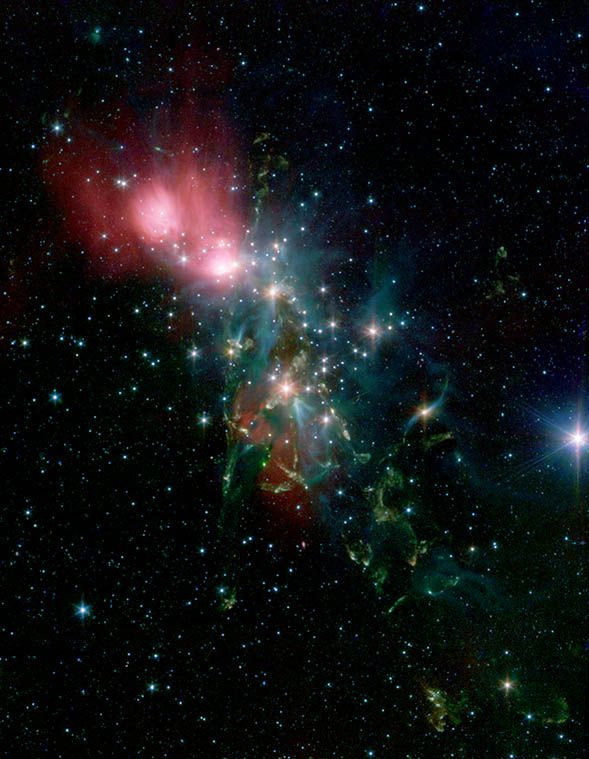NASA Shares Stunning Image Of Star Nursery Resembling A Rose In Space

KEY POINTS
- NASA snapped a photo of a nebula using the Spitzer Space Telescope
- The nebula looks like a giant floating rose in space
- The colors of the nebula were produced by newborn stars
NASA recently shared a mesmerizing photo of a massive cosmic structure that looks like a giant rose in space. According to the agency, the image features a dense cloud filled with newborn stars.
The photo shared by NASA was taken using the Spitzer Space Telescope. It features the nebula NGC 1333 located in the constellation Perseus. The agency noted that the nebula lies about 1,000 light-years from Earth’s neighborhood.
Based on the image, the nebula looks like a rose with a thorn-filled stem in space. Its unique appearance was caused by the different colors of the infrared lights emitted by the young star formations. Usually, these colors cannot be spotted by the human eye, but through Spitzer’s imaging capabilities, NASA was able to detect the infrared emissions of the stars and the cosmic materials surrounding them.
“Most of the visible light from the young stars in this region is obscured by the dense, dusty cloud in which they formed,” the agency stated. “With NASA's Spitzer Space Telescope, scientists can detect the infrared light from these objects.”
According to NASA, the stars within the nebula formed in different sub-groups instead of a single cluster. The first sub-group, which is located in the northern part of NGC 1333, gives off a reddish glow. NASA noted that reddish glow of this section was created by the infrared light coming from the warm dust produced by the stars.
The other sub-group, on the other hand, is located in the southern part of the nebula and emits yellow and green colors. The agency explained that the yellow and green colors in the nebula came from shock fronts that were formed by the emissions of the young stars.
“The knotty yellow-green features located in the lower portion of the image are glowing shock fronts where jets of material, spewed from extremely young embryonic stars, are plowing into the cold, dense gas nearby,” NASA explained in a statement.
According to NASA, observing the interaction between the nebula’s warm clouds and cosmic materials such as dust and gas provides detailed information regarding the formation of stars. Specifically, it sheds light on how stars like the Sun are formed.
© Copyright IBTimes 2025. All rights reserved.





















